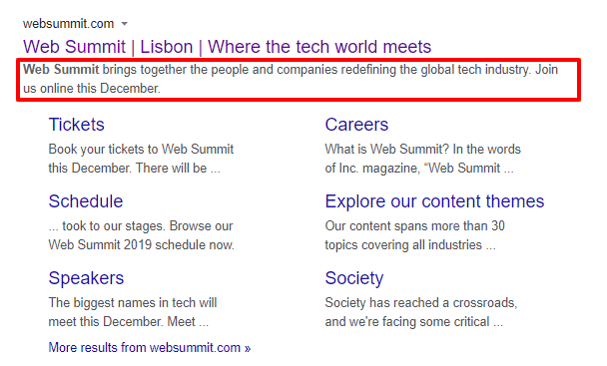
[ad_1]

One thing is clear, in order to increase website visits in the events world you need to spend money on advertising or you need to focus on writing value adding-content that will drive free and organic traffic.
This is where SEO comes to play. Without good SEO you simply won’t be found by search engines and without SEO you’ll need to pay to get the traffic you need! No one really wants that. The problem is that most people think SEO requires a lot of technical knowledge. That’s absolutely not true.
At BrightBull we’re pretty proud of the content we write and our organic traffic represents more than 60% of our total. We follow very simple rules to ensure we’re staying current and relevant for our audience and subsequently Google.

You do not need to hire an SEO agency!
Get your team on it.
Before I tell you about simple SEO for your B2B website…Your website needs to have a section for blogs or value adding content that gets updated regularlyThe most important thing I always suggest is that all value-adding event content should sit in a blog. If you don’t have a blog, then your “resources”, “news”, “what’s new”, “insights” section should do. If you don’t have any of these, then definitely create a specific section on your website that will house all the content. Pay special care and attention to this section as it will likely attract most of your organic traffic. The content you write should be buyer persona drivenThe pages, event pages, blogs and articles you create must be written with a buyer persona in mind. You should address known pain points, goals, topics of interest and relevant industry trends. Add value, personalise according to job role, company type or the segments of the market you cover.
|
SEO for B2B websites and event pages in 8 simple steps
1. Keyword: A specific keyword must be selected for your particular piece of content to rank for.
Without a keyword/topic/theme, your content will be tricky to come across organically. When choosing a keyword consider the likelihood that it will be searched for, and how competitive it will be. Strike a balance and optimise content around that keyword.
You might be asking, where do I get my keywords from? The answer lies in your buyer persona sheet (you can always give us a shout if you’re new to this). Your buyer person info should be packed with information around their pains/goals/challenges.
If you do not know where to begin, go to Ubersuggest, to find what and how you rank, but more importantly your competition. It’s a good place to start.
2. Headline: Write catchy and powerful headlines for all of your content
Everything starts with your headline, how you introduce the content you are presenting to the audience and what is the promise you’ll deliver with your piece.
|
BONUS: If you’re creating content for a B2B event, there is always a very useful formula that will work very well:
Speaker Name/ Speaker Company + Issue/Problem/Pain/Goal + Key Word
There are many formulas and here Neil Patel has plenty.
3. Page Title: The title of your specific content must contain that specific keyword you are intending to rank for
Your title acts as a signpost for search engines and people, to quickly ascertain the topic of your content – so make sure it not only allows for that, but also links to the keywords contained within the body of the piece. Just be careful not to make it sound clunky!
Generally if you are doing a blog post, the page title will be the same as your blog post. BUT you can change this if you want.
4. Meta Description: Always add a META description and ensure your keyword appears. Do not leave it to auto default.
Meta descriptions are most times forgotten, but they’re almost as important as your title when it comes to driving traffic. Search engines and searchers will find your content far more easily if your keyword appears here.
What is a META description?

If you use wordpress you need to install the YOAST plugin. It’s great.
5. URL (Web Address): Ensure that the URL of your webpage defaults to the title of your blog post / page
A URL (Uniform Resource Locator), more commonly known as a “web address”, specifies the location of a resource (such as a web page) on the internet.
A well-written URL cn
.an serve as their own anchor text when copied and pasted as links in forums, blogs, social media networks, or other online venues.
Generally this would also default to the page title of your page. But can be changed if you need to

MOZ website has a really simple way of explaining this. Link in the resources below.
Now to the content of the page
6. H1 Tags: The Title or header of your page must have only one H1 tag
The CSS attributes of your page have various different types of header tags (H Tags) and H1 is the one that tells search engines that this is the most important title/header of your page. There should only be one H1 tag on your whole page and that should be your blog or page title. And yep you’ve guessed it right it must have your keyword too!
7. Contextual keywords: The body of your copy must contain contextual keywords related and similar to the keyword you’ve picked.
Without fresh originally generated content your LinkedIn page can stagnate, and can end up being unrepresentative of where your company stands, or the value you can add to potential customers. Posting content from your blog or website gives it an instant makeover and will make sure you stay current.
8. Internal links: Your website pages should have internal links to other relevant pages on your site
As the user reads your content, you should always internally link to other relevant pages on your site. This will tell the reader and give google the context on what your page is all about.
Other relevant resources on SEO if you care to read more on the subject
Summing up
As you can see SEO is not really rocket science! In fact SEO is less about about the technicalities.. and more about the keyword you pick. Once you have this clear you and your team just need to be conscious and disciplined to follow these simple steps before you hit the publish button on any new content.
And honestly once you have the keyword, 4 out of the key items on this list will be automatically taken care of by your CMS.

[ad_2]
Source link
